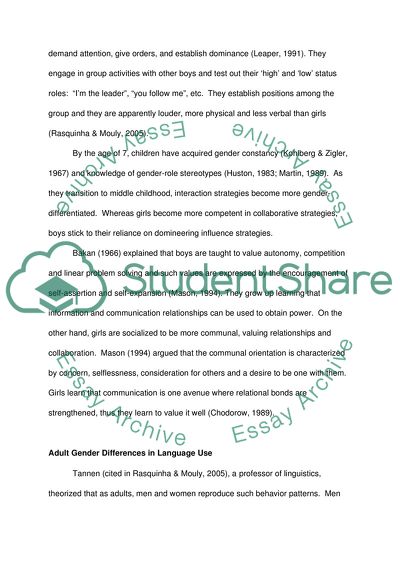Cite this document
(“Trace the development of language and gender research since the 1980s Essay”, n.d.)
Trace the development of language and gender research since the 1980s Essay. Retrieved from https://studentshare.org/miscellaneous/1590796-trace-the-development-of-language-and-gender-research-since-the-1980s-taking-one-or-two-examples-from-research-in-the-last-ten-years-explain-what-the-priorities-are-now
Trace the development of language and gender research since the 1980s Essay. Retrieved from https://studentshare.org/miscellaneous/1590796-trace-the-development-of-language-and-gender-research-since-the-1980s-taking-one-or-two-examples-from-research-in-the-last-ten-years-explain-what-the-priorities-are-now
(Trace the Development of Language and Gender Research since the 1980s Essay)
Trace the Development of Language and Gender Research since the 1980s Essay. https://studentshare.org/miscellaneous/1590796-trace-the-development-of-language-and-gender-research-since-the-1980s-taking-one-or-two-examples-from-research-in-the-last-ten-years-explain-what-the-priorities-are-now.
Trace the Development of Language and Gender Research since the 1980s Essay. https://studentshare.org/miscellaneous/1590796-trace-the-development-of-language-and-gender-research-since-the-1980s-taking-one-or-two-examples-from-research-in-the-last-ten-years-explain-what-the-priorities-are-now.
“Trace the Development of Language and Gender Research since the 1980s Essay”, n.d. https://studentshare.org/miscellaneous/1590796-trace-the-development-of-language-and-gender-research-since-the-1980s-taking-one-or-two-examples-from-research-in-the-last-ten-years-explain-what-the-priorities-are-now.


